Are Soy Foods Safe To Eat? Tofu, Tempeh, Edamame
Curious about soy foods and whether they’re safe to eat? You’re not alone!
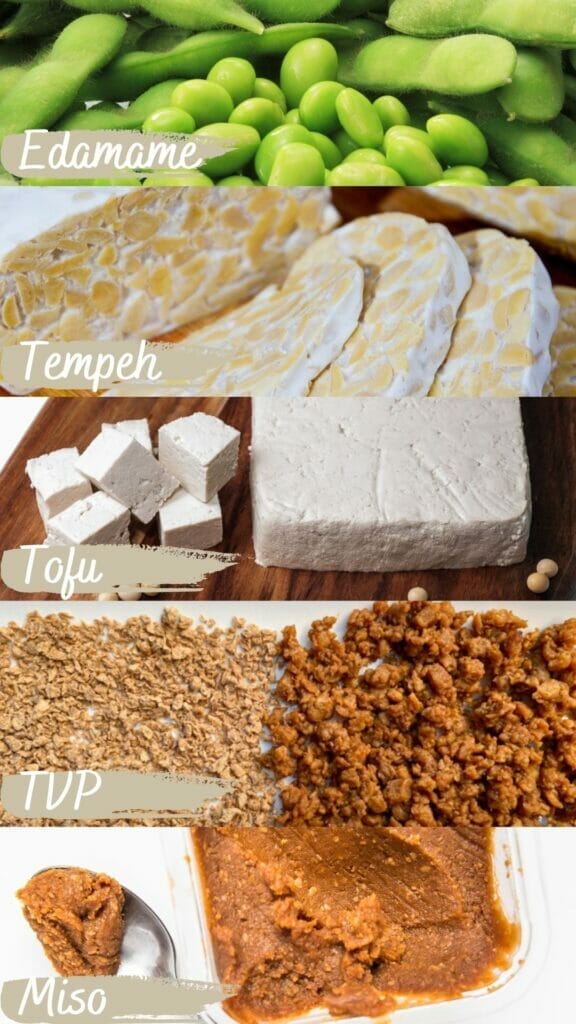
There’s a lot of conflicting information about soy foods out there. In this article, I provide some of the info I share about soy food products in my workshops as a helpful introduction to soy foods.
Recipes to Try: Tofu Shepherd’s Pie, Thai Red Curry with Edamame, Edamame and Broccoli Salad, Thai Power Bowl, Pomegranate & Edamame Whole Grain Salad
Minimally Processed Soy Foods
Edamame Beans
- Young, green soybeans harvested before they are fully mature.
- High in protein and fibre in either the shelled or whole pod format.
- After boiling they’re great as snacks or in soups, salads or stirfries.
- Include roasted edamame beans in trail mix.
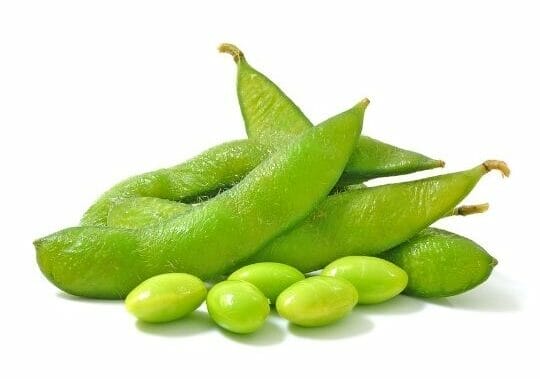
Tempeh
- Made from fermented whole soybeans, making them more digestible than tofu.
- Less processed with more protein, fiber and vitamins than tofu.
- Firmer and more textured than tofu with a nuttier flavor. Typically simmered for 5-10 minutes before being used in a recipe to remove any bitterness. Will get crispy when fried, grilled or baked.
- Note: Tempeh is often made with added grains so not all tempeh is gluten free.

Tofu
- Made by soaking, boiling and straining soybeans to make soy milk. The soy milk is then curdled (by adding calcium or magnesium) and pressed into blocks. (Similar to how dairy cheese is made.)
- How much liquid is pressed out determines if the tofu is
- Soft or Silken – custard like, often used for desserts or thick beverages
- Firm – best for crumbling for scrambles, casseroles, chili style dishes
- Extra Firm – has the least moisture, holds its shape so good for grill or stir fry style dishes
- Try firm or extra firm tofu in the Meatless Shepherd’s Pie.
Miso
- A seasoning paste made from fermented soybeans and barley or rice malt. A salty, tangy flavor that adds great umami. It is a probiotic, but high in sodium.

Soy Foods that Are More Processed
Soy Beverages
- Made from soybeans soaked, ground and strained.
- Soy milk has more Omega3 fat than dairy milk with similar protein levels and is fortified with calcium & vitamin D.
- Some soy beverages also have added sweeteners and flavors – always read the label.
Textured Vegetable Protein or Textured Soy Protein (eg. Ground Round or Tofurky)
- A processed soy product made from defatted soy flour that has been cooked under pressure and then dried. May include other grains as well. Formed into small granular yellow bits that are rehydrated and absorb liquid and flavor.
- Can also be bought in re-hydrated ready to use form (eg. Ground Round).
- Try TVP in these vegetarian tacos.
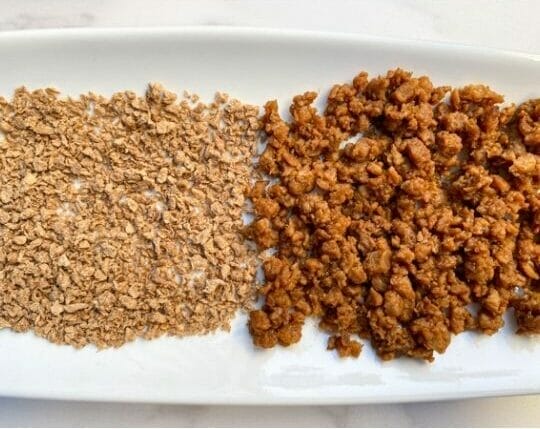
Soy Sauce
- A liquid seasoning made from soybeans, wheat, water and salt. Today’s soy sauce is chemically produced compared to traditional fermenting.
- Soy sauce adds intense umami flavour to dishes like our Favourite Fried Rice.
Are Soy Foods Safe to Eat?
The general consensus among leading health professionals and organizations across the world is that YES – soy foods are safe to eat by all ages several times a week. Especially, minimally processed soy foods like tofu, tempeh, edamame and miso (although high in sodium).
Soy and soy foods are one of the few plant-based protein sources that contain all nine essential amino acids. They’re also cholesterol free, high in Omega3 fatty acids and low in saturated fat. Soy based foods are also high in fibre and are a good source of nutrients like B-vitamins, iron, zinc and antioxidants. Many soy foods are also enriched with vitamin B 12, calcium, and vitamin D to help vegetarians get these much needed nutrients. They also offer the benefits of phytochemicals called isoflavones that have anti-inflammatory benefits and are being studied for other health benefits as well.
Those isoflavones are also what have caused some controversy about eating soy because they are phytoestrogens. The concern is that they can mimic estrogen in the body and lead to hormone overload. In fact, phytoestrogens, also found in flax seed, beans and other fruits and veggies, are weaker than human hormones and are not considered dangerous. Again, this is especially true when consuming minimally processed soy foods as part of a varied diet.
If there is any concern about soy foods, it is about consuming soy in the form of ultra processed soy products with added fats, sodium, sugar and preservatives or in supplement or powdered form. As we know from other foods, whole foods are more than the sum of their parts, removing pieces from surrounding enzymes, bacteria and other other elements affects the overall nutritional quality of food.
Allergies, of course, are another caution for soy foods. Soy allergies are quite common, so always read ingredient labels of meat alternatives. Wheat is also commonly used in the processing of soy foods, so anyone with gluten intolerance should also be careful to read ingredient labels.
Bottom Line:
- Enjoy a variety of foods and protein sources, including soy foods.
- Choose whole soy foods when possible – soybeans, edamame, tempeh
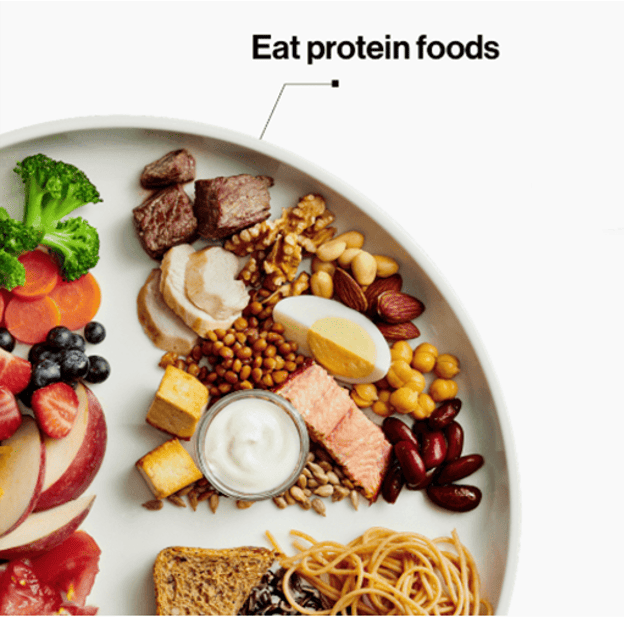
Cost & Nutrient Comparison of Soy Foods Vs Meat
| Tempeh | Tofu (extra firm) | Edamame
Beans |
Chicken
(boneless, skinless breast) |
Beef
(lean ground beef) |
Pork
(boneless pork chop) |
|
| Typical Package | 250 g | 350 g | 500 g | 454 g | 454 g | 454 g |
| Cost (not on sale) | $4.49 | $2.48 | $3.50 | $14/kg | $9/kg | $13/kg |
| Serving Size | 100 g | 100 g | 100 g | 100 g | 100 g | 100 g |
| Cost per serving | $1.79 | $.71 | $.70 | $1.40 | $.90 | $1.30 |
| Calories | 193 | 76 | 122 | 165 | 332 | 202 |
| Fat | 11 g | 4.8 g | 5.0 g | 3.6 g | 30 g | 11 g |
| Cholesterol | 0 | 0 | 0 | 85 mg | 78 mg | 77 mg |
| Sodium | 9 mg | 7 mg | 6 mg | 74 mg | 67 mg | 58 mg |
| Carbohydrates
Fibre Sugar |
9 g
5 g 1 g
|
2 g
0 0 |
10 g
5 g 2.2 g
|
0 | 0 | 0 |
| Protein | 19 g | 8 g | 11 g | 31 g | 14 g | 25 g |
| Vitamin C | 0 | 10% | 1% | |||
| Calcium | 11% | 10% | 6% | 1% | 2% | |
| Iron | 15% | 15% | 12% | 5% | 8% | 4% |
Notes:
*Nutrition breakdown from Wikipedia for comparison of key nutrients only. Not all nutrients and vitamins are represented. Specific products will vary with each manufacturer.
**Plant-base iron is more difficult for body to absorb, best eaten with Vitamin C source like sweet peppers, citrus, dark green veggies, strawberries, lemon juice, etc.
*** Prices are based on average store prices, not sale prices.
Do you eat soy foods regularly? Are you interested in trying? Do you have favourite recipes? Let me know some of your thoughts in the comments below or tag me on Instagram at #getgettys or Facebook @GettyStewart.HomeEconomist.
Sign up to get articles by Getty delivered to your inbox. You’ll get recipes, practical tips and great food information like this. Getty is a Professional Home Economist, speaker and writer putting good food on tables and agendas. She is the author of Manitoba’s best-selling Prairie Fruit Cookbook, Founder of Fruit Share, a mom and veggie gardener.


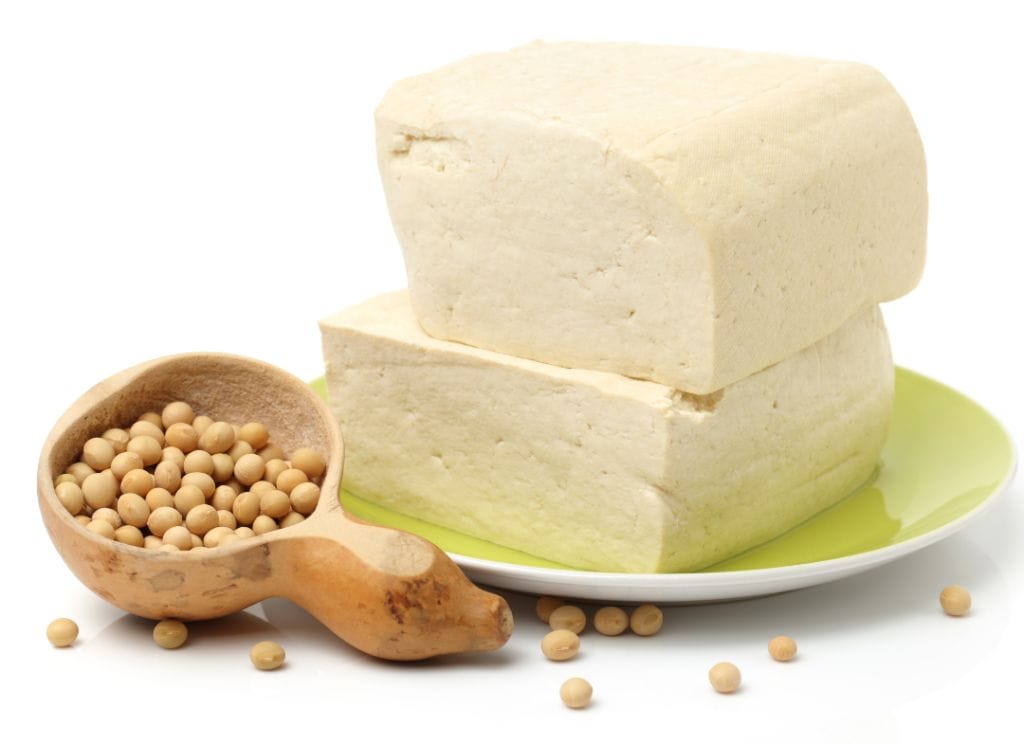
Thank you so much for your overview of the lowly Soybean. I have to say I have overlooked the versatility of this legume! You have piqued my interest and reminded me how delicious it can be.
Awesome! So glad to re-acquaint you! Funny how we sometimes just get into a routine and forget about past favourites. I’m really enjoying edamame beans right now and am excited to try to grow some in my garden this summer! All the best, Getty